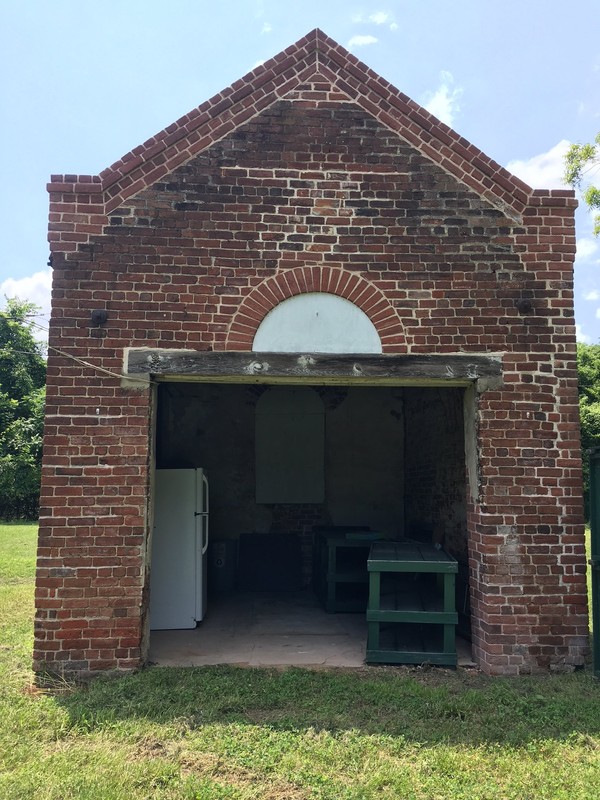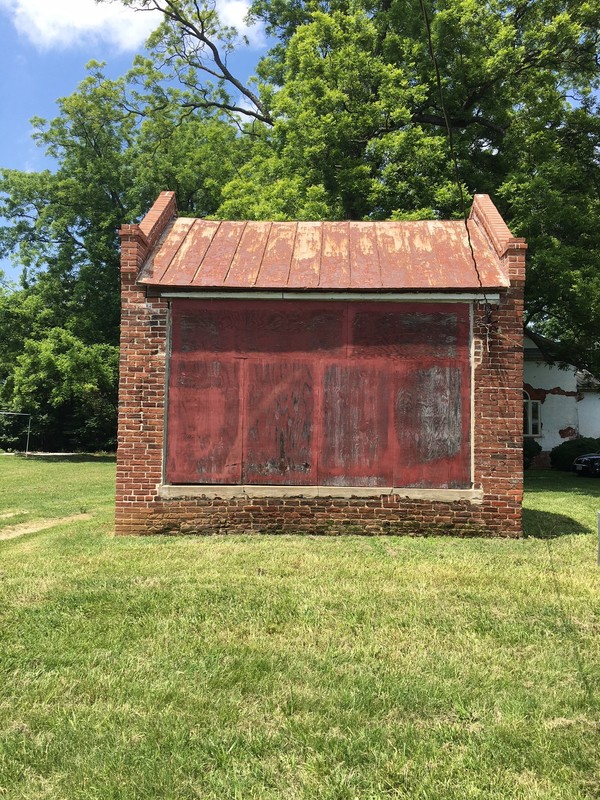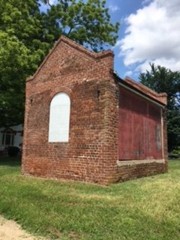Battersea Greenhouse
Introduction
Text-to-speech Audio
Images



Backstory and Context
Text-to-speech Audio
One of the greatest contributions May brought to Battersea was the addition of the traditional style greenhouse[1]. It was built circa 1830, and would have represented status and good taste as greenhouses during this period were a luxury, some estimates concluding that a greenhouse could cost upwards of $200,000 dollars per year in modern terms. In 2017 James River Institute for Archaeology did a study of the greenhouse and excavated 19 test units around the north, west, and south walls. Interestingly, they found that the greenhouse had no heat source, so they believe the building either relied solely on sunlight, or decomposing bark beds made of manure, compost, and bark to keep plants warm in winter months. The archaeologists also found fragments of planting pots, which means the plants housed here would have been potted.
The boarded up portion of the structure is where the south-facing windows once were. When originally constructed, the door to the greenhouse was in the middle of the south wall. During the 20th century, the structure was converted into a garage by opening up the east wall and removing the door on the south, carrying the bricks across to make the former door part of the south-facing windows. Along the south side, JRIA found different types of colored glass, including variations of aqua and green, as well as colorless. Colorless glass wasn’t introduced until the 1830’s but given that American horticultural pursuits generally lagged behind those of Europeans, the Battersea greenhouse likely had green or aqua glass when first constructed due to iron impurities in glass materials.In 2016, Warren Davies with Virginia
Masonry Restoration repaired a large vertical fissure in the greenhouse and did
extensive work to stabilize the structure. If not repaired soon, the greenhouse
could have further deteriorated and even collapsed. The fact that the
greenhouse has remained intact for almost 200 years is remarkable, making it
one of the oldest American greenhouses still in existence today.
[1] As opposed to lean-to style with a sloping wall of glass or glasshouse styles made almost fully of glass, traditional style greenhouses had vertical windows and were constructed with thick brick walls to keep in heat.
